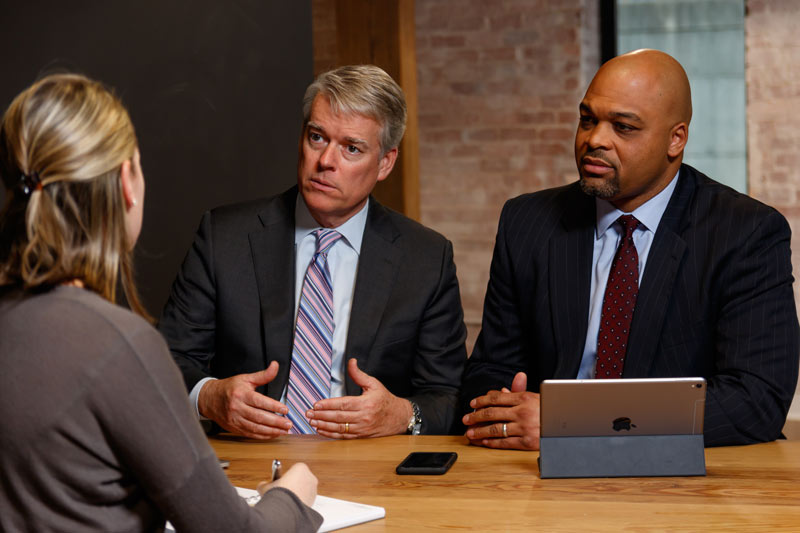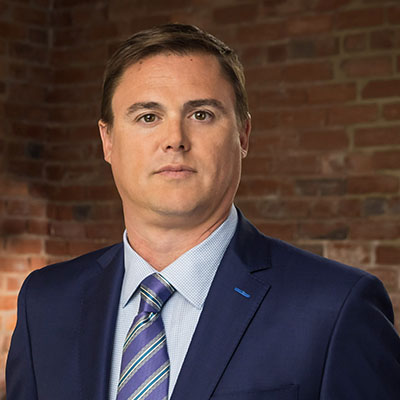Client communication is critically important to the successful resolution of a personal injury claim. Obtaining full and fair compensation in the aftermath of an injury requires a dedicated team effort and an open line of communication. This post is designed to provide a general overview of the personal injury process, with a specific eye on the practical aspects of the attorney-client relationship.

Intake Meeting: The Initial Interview
Once the decision to hire an attorney is made, an intake appointment needs to be scheduled. First impressions are important for both the lawyer and the client, and it is best not to forego this in-person meeting in favor of a telephone call or an email exchange. From the attorney’s perspective, the goal of the intake meeting is to collect the background information needed to open the file, explain the contract which lays out the terms of representation, and get a general overview of the details of the incident and the projected treatment plan moving forward.
A face-to-face meeting provides both the attorney and the new client with ample opportunity to ask questions and provide all the information necessary to get the claims process started on the right foot. It is important for the client to bring all the paperwork that has been received to the appointment so that copies can be made for the file, including:
- The exchange of information form provided by the police
- Any investigative materials, including photographs of the scene and the involved vehicles (when applicable)
- Insurance declarations pages
- Health insurance cards, and
- Discharge paperwork from any medical providers
Follow-Up Meeting: 30 Days Later
It is also important to have another in-person meeting approximately 30 days after the intake appointment to review any materials the attorney has collected, as well as develop a clearer understanding of the medical treatment plan the client has in place. Typically, by the 30-day meeting, the following has occurred:
- A copy of the police report is in the file
- The investigating police officer has been interviewed
- A letter of acknowledgment has been received from the applicable insurance carrier
- The initial medical records and bills showing diagnoses and any health insurance payments have been received
The 30-day appointment provides an opportunity for both the attorney and the client to discuss any issues or potential problems that may be developing within the context of the claim. It also is a time to get in front of any potential issues and plan a course of action relative to the claim moving forward. In addition, injured clients have typically had an opportunity to follow up with physicians and have been given a more specific treatment plan, such as successive physical therapy appointments, additional radiologic examination, or a referral to a specialist. It is important that the attorney have that information so that the additional medical bills and records can be requested.
Following the 30-day appointment, scheduling meetings becomes much more case-specific. By way of example, if the client has a medical treatment plan that calls for 14 sessions of physical therapy, it may make sense to wait until the conclusion of that treatment before scheduling another appointment. If the client has made a full and complete recovery, a meeting can be scheduled to discuss the final submittal and the negotiations process. If the medical treatment plan is more amorphous, it may be beneficial to schedule an intermediary appointment to discuss the various treatment options that have been suggested. In either case it is important that the client regularly inform the attorney of any new medical providers and any treatment decisions so that the file can be appropriately updated and remain current.
Discussing the Value of Your Claim
A personal injury case cannot be submitted prematurely. To maximize value, it is critically important that all of the relevant medical records and bills are included in the submittal to the at-fault party’s insurance carrier. Once the client has concluded active treatment and made a full recovery, or alternatively has reached maximum medical improvement, it is helpful to schedule another in-person meeting to discuss case value. The case belongs to the client, and as such having a frank and open discussion about the value of the claim prior to the negotiations process ensures that both the attorney and the client are on the same page regarding the initial settlement demand and any offers of settlement that are proposed.
In the end, every personal injury case is a unique, deeply personal experience for the injured party, and no two claimants are exactly alike. Understanding the personal impact that an injury has on a client’s life is essential to appropriately valuing a claim and presenting the complete picture with regards to the pain, suffering, inconvenience, and mental anguish that results from an injury.
Maintaining active and open communication between the attorney and the client is the best way to make sure that the claim is handled promptly, completely, and accurately. In the end this is the single best way to maximize value in the personal injury process.
If you have been injured through no fault of your own and would like a free case evaluation, click here.




